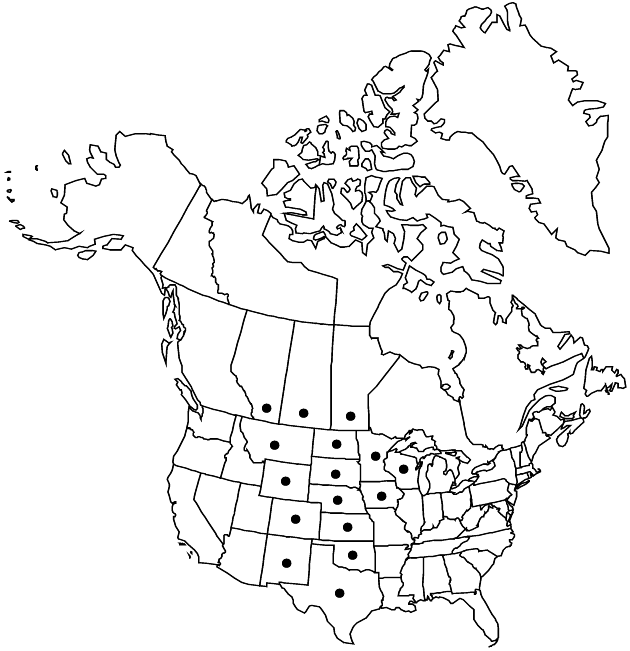Solidago mollis
Index Seminum (Göttingen) 1836: 5. 1836.
Plants loosely clustered, 10–50 (–70) cm; rhizomes creeping. Stems 1 (at ends of rhizomes), ascending to erect, grayish green, moderately to densely finely strigilloso-puberulent. Leaves: basal and proximal often withering by flowering, gradually tapering to winged petioles 1/2 length of leaf, blades 45–100 × 10–35 mm, proximalmost much smaller, margins serrate, faces moderately finely scabroso-strigillose; mid and distal cauline sessile, blades elliptic to lanceolate or ovate, 10–60 × 4–20 mm, sometimes much reduced distally, firm, thickish, margins serrate to entire, strongly 3-nerved or sometimes brochidodromous, faces moderately finely strigillose. Heads (5–) 50–300, in compact thyrsiform to secund-pyramidal paniculiform arrays, proximal branches ascending, sometimes apically recurved or branches spreading, recurved, secund. Peduncles 0.5–3 mm, moderately to densely finely hispiduloso-strigillose; bracteoles 0–3, lanceolate, strigillose, grading into phyllaries. Involucres campanulate, 3–6 mm. Phyllaries in 3–4 series, lanceolate to oblong (to 1.5 mm wide), strongly unequal, margins ciliate, apices acute to obtuse, glabrous. Ray-florets 6–10; laminae 1–2 × 0.2–0.6 mm. Disc-florets 3–8; corollas 2.4–3.8 mm, lobes 0.7–1.2 mm. Cypselae (cylindro-obconic) 1.5–2 mm, sparsely strigillose; pappi ca. 2–3 mm. 2n = 18, 36, 54.
Phenology: Flowering Jul–Oct.
Habitat: Dry or drying prairies, open woods, along fence rows
Elevation: 300–1700 m
Distribution

Alta., Man., Sask., Colo., Iowa, Kans., Minn., Mont., Nebr., N.Mex., N.Dak., Okla., S.Dak., Tex., Wis., Wyo.
Discussion
Solidago mollis is quite variable in array shape, which ranges from compact club-shaped to elongate pyramid-shaped, the apex leaning to one side. Plants with narrower, more sparsely strigose leaves that are similar in appearance to those of S. radula but are not scabrous have been treated as var. angustata Shinners. Those occur in Oklahoma and Texas. G. L. Nesom (1993b) discussed the possible conspecificity of S. mollis and S. velutina (including S. sparsiflora and S. californica); this does not appear to be justified based on morphology and habitat differences.
Selected References
None.
Lower Taxa
No values specified."/2lengthofleaf" is not declared as a valid unit of measurement for this property.